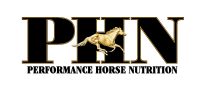methods to reduce
NON-STRUCTURAL CARBOHYDRATE CONTENT
2021

Written by Performance Horse Nutrition
Many horse owners would like to reduce the amount of carbohydrate in the diets for their horses. The reasons, or potential reasons, for wanting a low carbohydrate horse feed could include the desire to influence or modify behavior, or a sensitivity to so-called carbohydrate diseases including: Tying-up, Cushing’s, Laminitis, Obesity or Insulin Resistance. In a previous newsletter (July – 2003) we discussed the various types of carbohydrates in horse diets.
These carbohydrates can roughly be divided into two types: Structural and Nonstructural. Structural carbohydrates are often referred to as fiber. Hay, mature pasture grass, beet pulp and soybean seed coats are good sources of fibrous carbohydrates. Structural carbohydrate (fiber) shouldn’t be the target for dietary elimination since fiber is essential for proper function and motility of the horse’s digestive system. The other broad classification of carbohydrates is non-structural carbohydrate. Non-structural carbohydrate consists of sugar, or carbohydrates such as starch, that can be broken down to simple sugars within the horses’ digestive system. Feed ingredients rich in sugar and starch include oats, corn, barley and molasses. Our effort to control carbohydrate content of a horses’ diet should be aimed at reducing the amount of non-structural carbohydrate (sugar and starch). The following are methods to help horse owners reduce non-structural carbohydrate content of the diet.
Sugar in Hay and Pasture?
Before going too far in trying to reduce the non-structural carbohydrate content of your horse’s diet, a bit of reality is in order. Hay and/or pasture, the one ingredient that all horses require, contains fibrous carbohydrate which is essential for normal gut function, but hay and pasture also contain sugar and starch. Therefore, complete eliminate of sugar and starch from the horses’ diet is not possible. We can only hope to minimize or reduce the amount of non-structural carbohydrate in the diet. Many people often ask how hay and pasture can contain sugar essential for normal gut function, but hay and pasture also contain sugar and starch. Therefore, complete eliminate of sugar and starch from the horses’ diet is not possible. We can only hope to minimize or reduce the amount of non-structural carbohydrate in the diet. Many people often ask how hay and pasture can contain sugar. In a process called photosynthesis that occurs during daylight hours, carbon dioxide, water and energy from the sun are utilized by the plant to form sugar. Sugar is then utilized by plants at night, in a process called respiration, to form more complex fibrous carbohydrates. When photosynthesis out paces respiration, such as during cool nights in the spring and fall, plants accumulate sugar. Plants also accumulate sugar if they are stressed by drought, or by nutrient deficiencies.
The sugar content of forage contributes to the total Nonstructural carbohydrate content of the diet and when horses are sensitive these sugars need to be minimized. To minimize sugar content of hay it should be cut in the early morning hours, prior to photosynthesis beginning at first light. If horses are to have access to pasture, they should graze early in the morning when the sugar content of the grass is the lowest. If you have already purchased hay, the sugar content can be reduced by soaking the hay in water prior to feeding it to the horse. Katy Watts, Rocky Mountain Research, determined that soaking hay in cold water prior to feeding for 30 or 60 minutes will significantly decrease (18 – 30%) the sugar content of forage. Watts also pointed out that simply selecting the type of hay fed will not always guarantee a low sugar content since sugar content is influenced by environment and plant health.
Sugar in Grain
Since most grain concentrates contain a combination of corn, barley, oats, wheat or molasses, it should come as no surprise that non-structural carbohydrate content is high. To minimize non-structural carbohydrate intake, the amount of grain being fed must be reduced.
Unfortunately, most grain concentrates also contain the vitamin/mineral portion of the diet and a reduction in feeding amount also decreases the amount of vitamin/mineral fortification. Certain grain concentrates may contain less non-structural carbohydrate than others if their inclusion of fat and fiber (beet pulp, soybean hulls, alfalfa) are higher and the grain and molasses content is reduced.
Table 1. Non-structural carbohydrate content of feeds**
Product Non-structural carbohydrate (NSC), %
“Low NSC”
Alfalfa Hay 11.4
Grass Hay 13.3
Beet Pulp 12.2
“High NSC”
Oats 50.7
Barley 63.1
Corn 73.2
Molasses 58.4
**Dairy One Forage Laboratory, Ithaca, New York.

